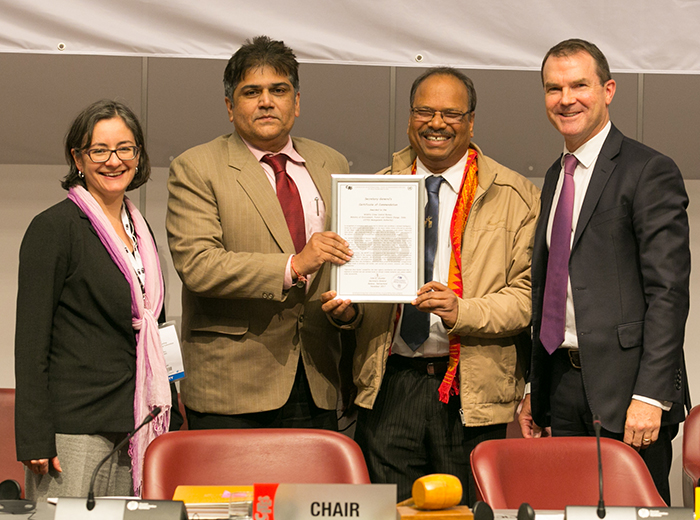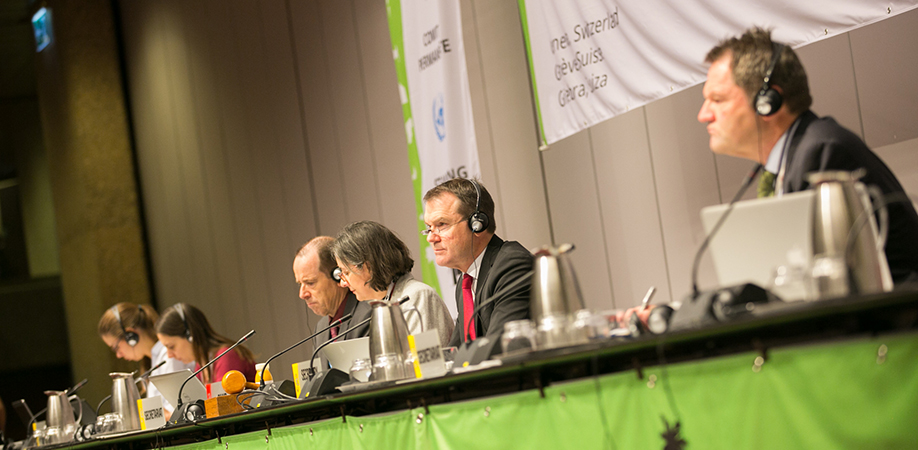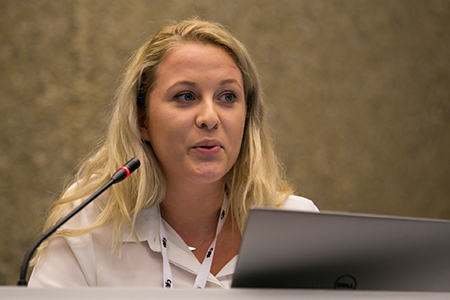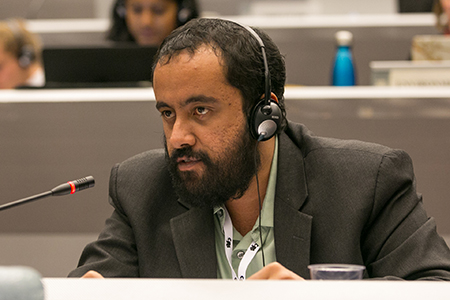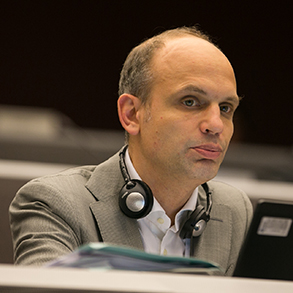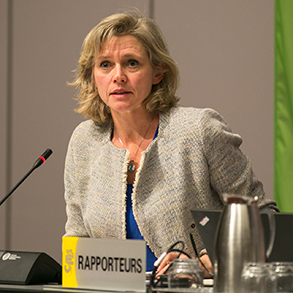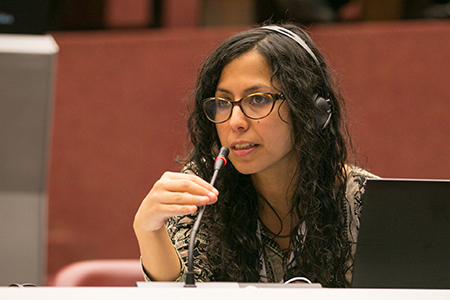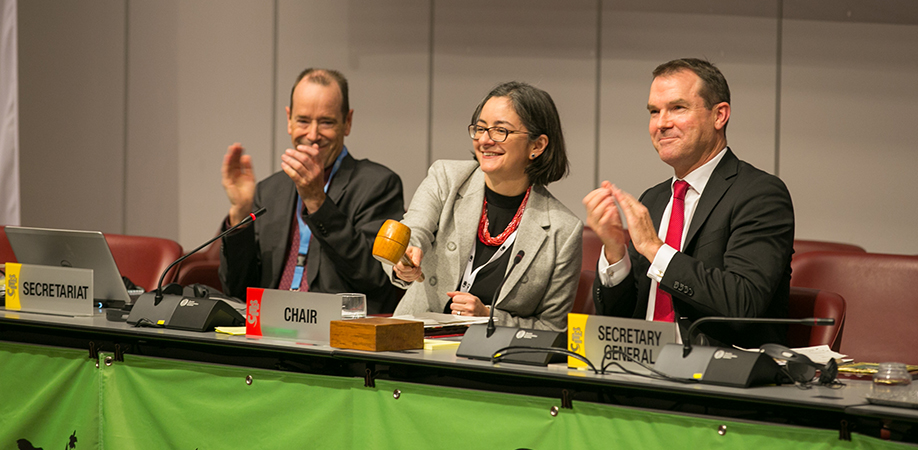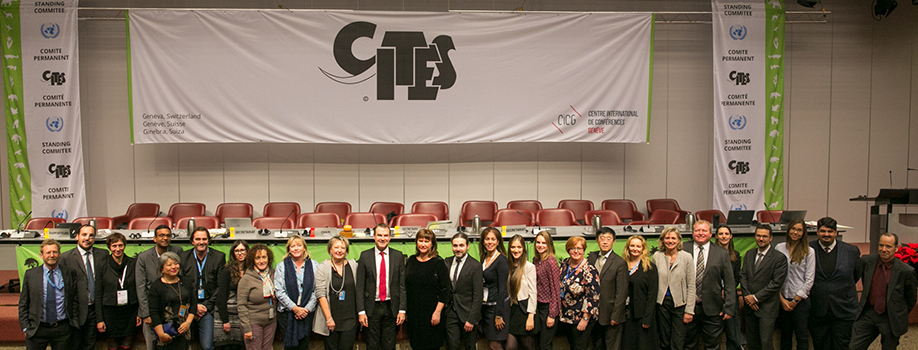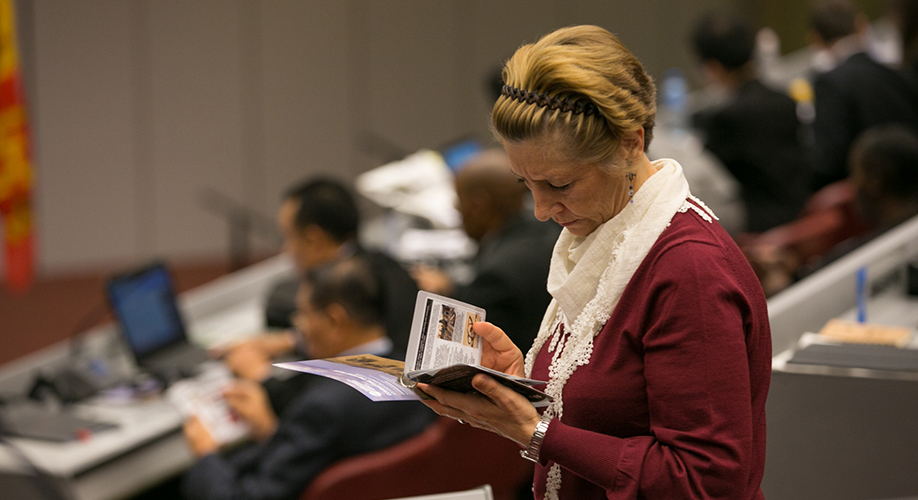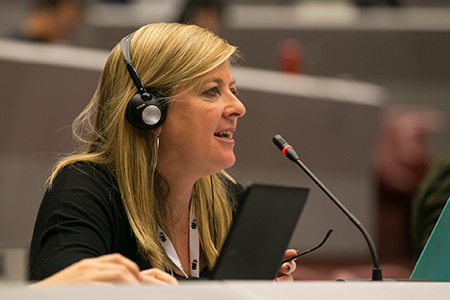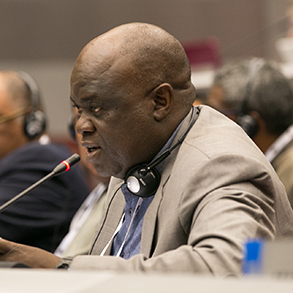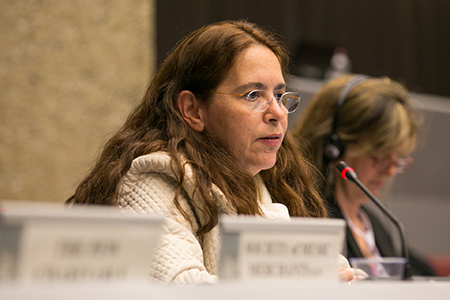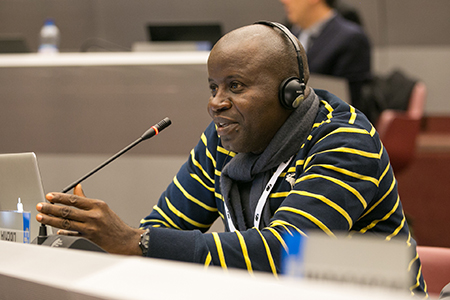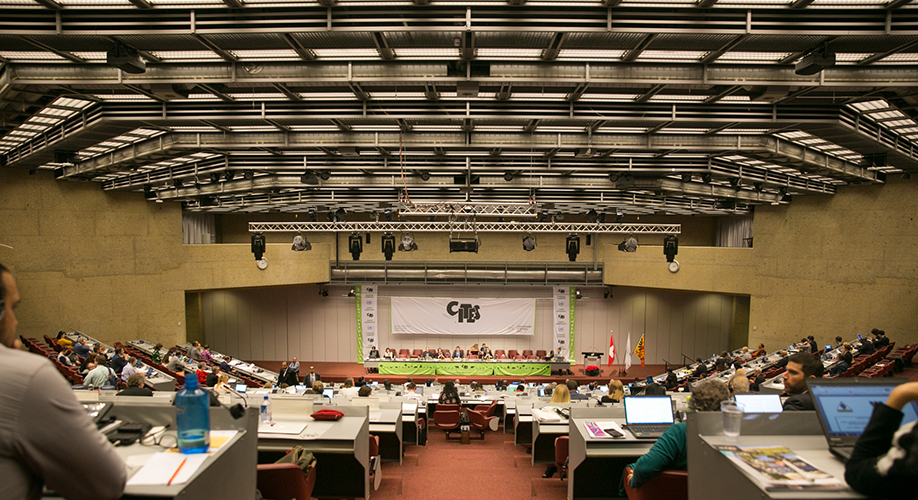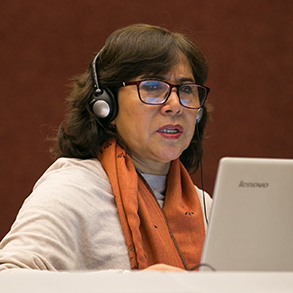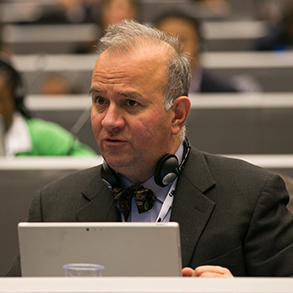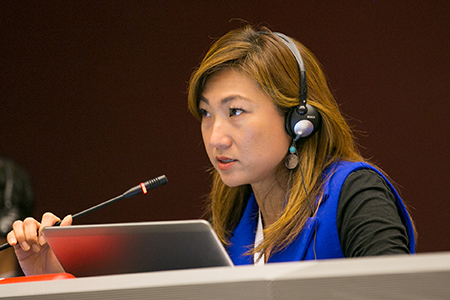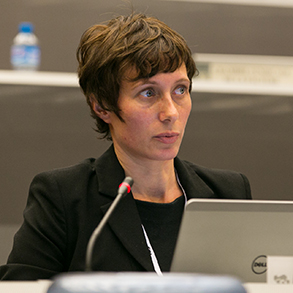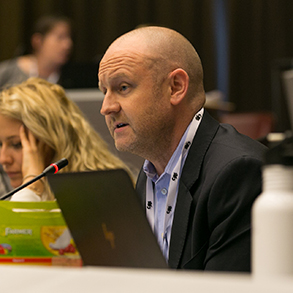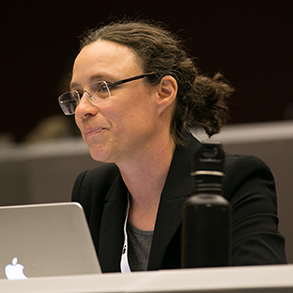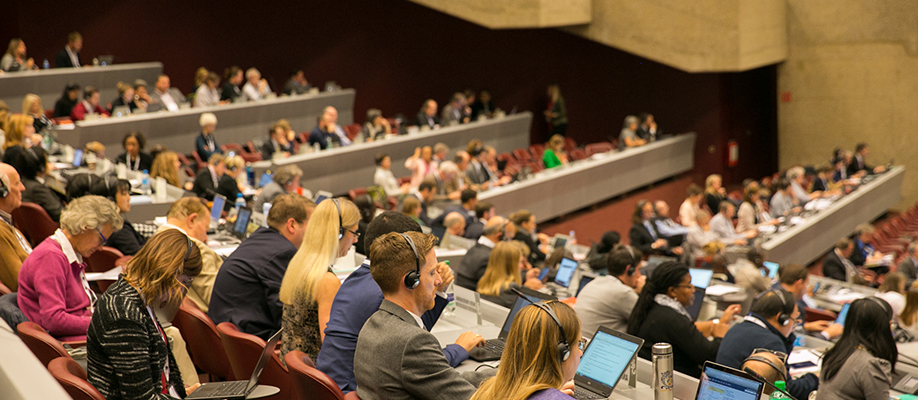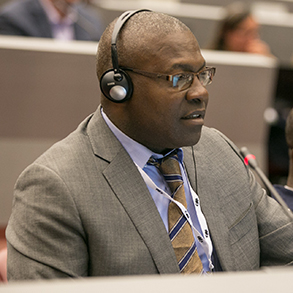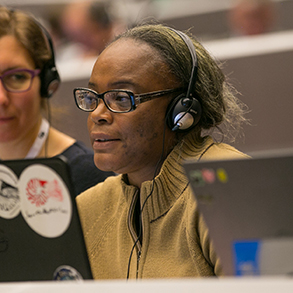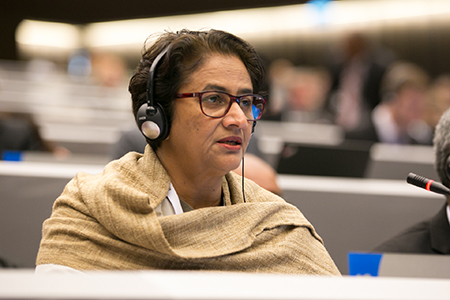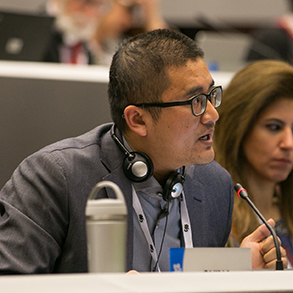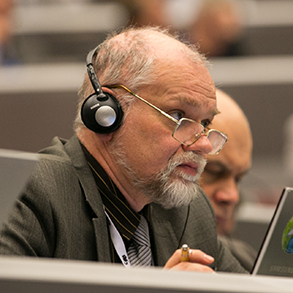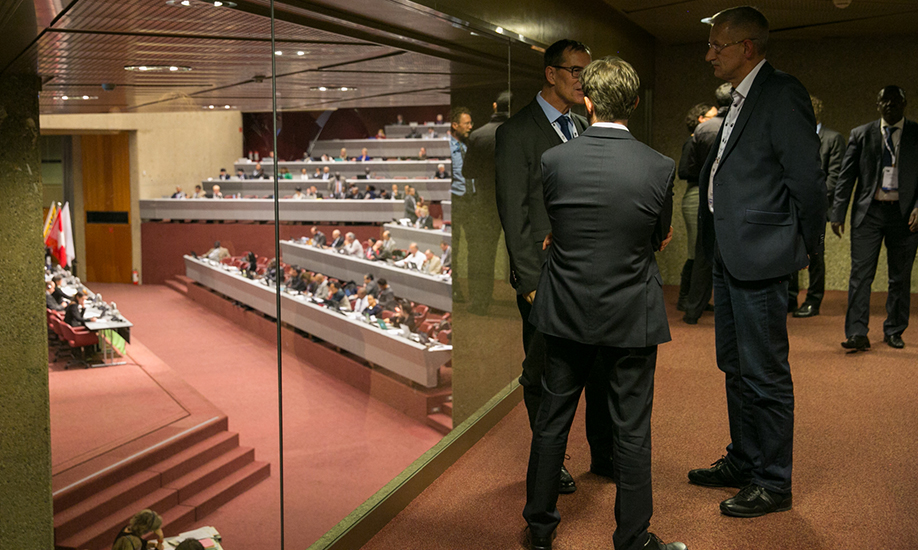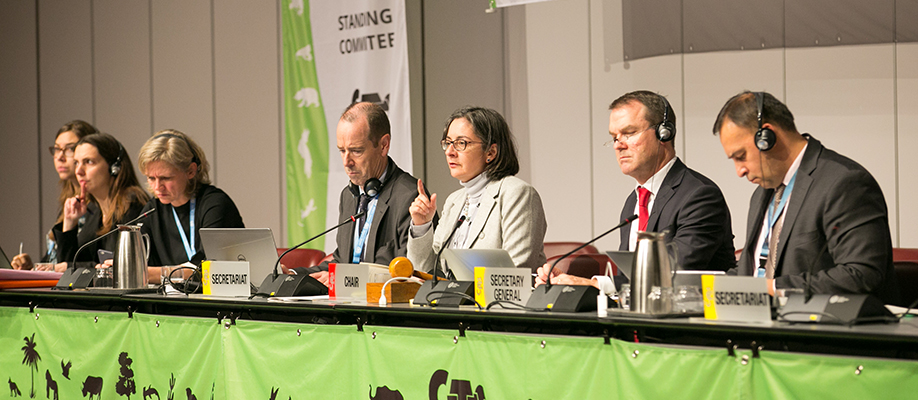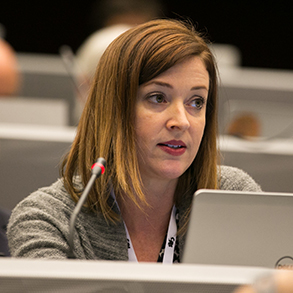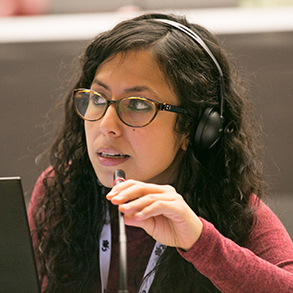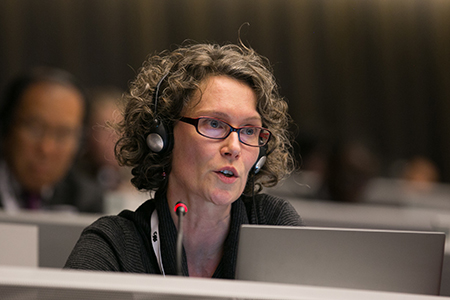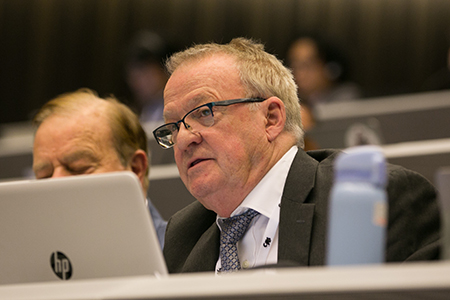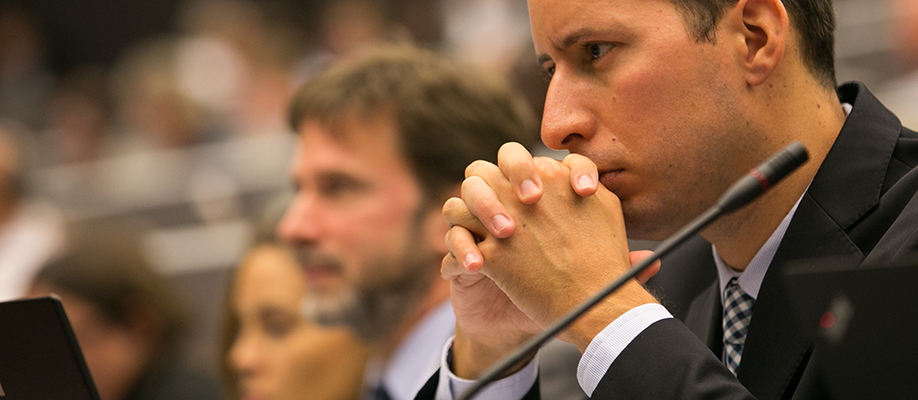69th Meeting of the Standing Committee of the Convention on International
Trade in Endangered Species of Wild Fauna and Flora (CITES)
27 November - 1 December 2017 | Geneva, Switzerland
Summary Highlights, 27 November - 1 December 2017
Highlights for Friday, 1 December 2017
|
On Friday, the sixty-ninth meeting of the Standing Committee of the Convention on International Trade in Endangered Species of Wild Fauna and Flora (CITES SC69) convened for its final day in snowy Geneva. In the morning, delegates caught up on outstanding agenda items, and considered in-session documents in the afternoon. National Ivory Action Plans (NIAPs), pangolins and timber species from Madagascar stirred lengthy discussions. Kuwait requested the deferral of a decision on the NIAP process for Qatar until SC70, but despite having presented an information document on its efforts, the Standing Committee (SC) nonetheless requested it continue in the NIAP process. The discussion on pangolins focused on issues related to the treatment of specimens, including stockpiles, obtained by parties prior to their listing in Appendix I. A recommendation that all pangolin specimens, regardless of the timing of their acquisition, be regulated as Appendix I specimens in accordance with Article III of the Convention until further consideration by CoP18, led to the entire report being put to a vote. The recommendation was adopted by a majority decision of the SC, with China, Russian Federation and Kuwait voting against the proposal. On timber, the SC agreed to maintain the recommendation for parties not to accept exports or re-exports for commercial purposes from Madagascar of specimens of Diospyros spp. and Dalbergia spp. SC69 was gaveled to a close at 6:20 pm, with delegates giving SC Chair Carolina Caceres a standing ovation and praising her “steely resolve” as well as the hard work of the CITES Secretariat. |
||
|
IISD Reporting Services, through its Earth Negotiations Bulletin (ENB) Meeting Coverage, provided daily web coverage from the 69th Meeting of the CITES Standing Committee. In addition, IISD Reporting Services will publish a summary and analysis report of the meeting on Monday, 4 December 2017. Photos by IISD/ENB | Kiara Worth + Visit the web coverage for Friday, 17 November 2017 | ||
|
|
|
|
|
|
|
|
|
|
Highlights for Thursday, 30 November 2017
|
On Thursday, participants reconvened in Geneva for the fourth day of the 69th meeting of the CITES Standing Committee (CITES SC69). When not meeting in in-session working groups, parties worked in plenary to tackle outstanding agenda items, including: cooperation with other biodiversity related conventions; review of the resolution on consideration of proposals for the transfer of the African elephant from Appendix I to Appendix II; and cooperation under the 2006 Memorandum of Understanding (MoU) between CITES and the Food and Agriculture Organization of the UN (FAO), with special reference to the scientific and technical evaluation of listing proposals for commercially exploited aquatic species. In deliberations on marine species listings, Secretary-General Scanlon outlined cooperative work between the FAO and the Secretariat, as well as close work with Regional Fisheries Maritime Organizations (RFMOs), highlighting the “collegiality” as well as “breadth and depth” of the FAO-CITES relationship. During the day, the SC addressed the difficulties the Secretariat has faced in determining which of multiple authorities claiming to be Management Authorities in a party is authorized to communicate with other parties and with the Secretariat and represent a party at CITES meetings. On the implementation of the Convention, participants underscored that adequate national legislation is critical for regulating legal trade and combating illegal trade. SC69 also considered, among other issues, illegal trade in eels, rosewood timber species, and tortoises and freshwater turtles. |
||
|
+ Visit the web coverage for Thursday, 30 November 2017 | ||
|
|
|
|
|
|
|
|
|
Highlights for Wednesday, 29 November 2017
|
On Wednesday, the Standing Committee (SC) resumed its discussions in plenary. In-session working groups continued to meet on the margins of the meeting, including in the evening. In the morning, the SC deliberated on matters of food security, livelihoods, engagement of rural communities in CITES and terminology related to local, indigenous and rural communities. Interventions from participants included pleas to consider the effects of CITES decisions on local people. Intersessional working groups were formed on livelihoods and on rural communities, with the chair of the latter tasked with identifying relevant rural community representatives in consultation with parties. The SC also considered reports on the Intergovernmental Science-Policy Platform on Biodiversity and Ecosystem Services (IPBES), UN World Wildlife Day, combating wildlife cybercrime, disposal of confiscated specimens and specimens produced from synthetic or cultured DNA. In the afternoon, the SC returned to the issue of livelihoods and food security, agreeing to a revised mandate for an intersessional working group. Discussions proceeded quickly on purpose codes on CITES permits and certificates, definition of the term “appropriate and acceptable destinations,” electronic systems and information technologies and traceability, as well as cheetahs. Delegates also discussed issues related to sturgeons and paddlefish, sharks and rays, the African lion and CITES Appendix III. Several intersessional working groups were formed. At an event held alongside CITES SC69, the International Consortium on Combating Wildlife Crime (ICCWC) announced new funding to step up the fight against illegal wildlife trade. The new funding will come from the EU (EUR 13,500,000), Germany (EUR 400,000) and the UK (GBP 4,000,000), which in addition to the support provided by France and the Principality of Monaco (EUR 85,000 and EUR 200,000), totals USD 20 million for the implementation of the ICCWC Strategic Programme 2016-2020. |
||
|
+ Visit the web coverage for Wednesday, 29 November 2017 | ||
|
|
|
|
|
|
|
|
|
|
Highlights for Tuesday, 28 November 2017
|
On Tuesday morning, the 69th meeting of the Standing Committee of the Convention on International Trade in Endangered Species of Wild Fauna and Flora (CITES SC69) reconvened to address outstanding agenda items from the day before. While Standing Committee (SC) Chair Carolina Caceres urged participants to make their interventions brief in an attempt to expedite discussions, several issues prompted extensive debate. In the morning, the SC addressed timber issues, with the CITES Secretariat proposing to maintain the recommendation for parties not to accept exports or re-exports for commercial purposes from Madagascar of specimens of Diospyros spp. and Dalbergia spp. A number of issues on elephants were discussed, ranging from commending the efforts made or underway by some parties to close their domestic ivory markets, and addressing progress on National Ivory Action Plans (NIAPs), including concerns related to the Elephant Trade Information System (ETIS) methodology. In-session working groups were set up to address timber and elephant issues. In the afternoon, the SC considered humphead wrasse, pangolins, illegal trade in Tibetan antelope, rhinoceroses and interpretation of annotation #15. The SC struck in-session working groups on humphead wrasse, pangolins and Tibetan antelope, among others. |
||
|
+ Visit the web coverage for Tuesday, 28 November 2017 | ||
|
|
|
|
|
|
|
|
|
|
Delegates speak informally while plenary proceeds | ||
Highlights for Monday, 27 November 2017
|
On Monday, John Scanlon, Secretary-General of the Convention on International Trade in Endangered Species of Wild Fauna and Flora (CITES), welcomed participants to Geneva for the 69th meeting of the Standing Committee (SC), likening the gathering to a “mini-CoP.” He highlighted a recent UN General Assembly Resolution on tackling illicit trafficking in wildlife and called for increased efforts to put trade in CITES-listed timber on a legal and sustainable footing. He stressed the SC’s “supportive and non-adversarial” approach to CITES compliance matters. SC Chair Carolina Caceres (Canada) noted the packed agenda at SC69 and urged participants to summon a “spirit of collaboration” in order to complete the work required before SC70 and the 18th meeting of the Conference of the Parties (CoP18). The SC then considered administrative, financial and compliance issues, including on introduction from the sea of specimens from the North Pacific population of the sei whale. Switzerland announced it would provide 1 million Swiss Francs to the CITES Secretariat each year, starting in 2019, pending approval by its parliament for the budget increase. Sri Lanka announced the dates for CITES CoP18 in Sri Lanka (May 22 - June 3 2019). |
||
|
+ Visit the web coverage for Monday, 27 November 2017 | ||
|
|
|
|
|
|
|
|
|
|
IISD Reporting Services is grateful to the many donors of the Earth Negotiations Bulletin (ENB) and recognizes the following as core contributors to the ENB: the EU and the Kingdom of Saudi Arabia. General Support for the Bulletin during 2017 is provided by the German Federal Ministry for the Environment, Nature Conservation, Building and Nuclear Safety (BMUB), Italian Ministry for the Environment, Land and Sea, Japanese Ministry of Environment (through the Institute for Global Environmental Strategies - IGES), New Zealand Ministry of Foreign Affairs and Trade, Swedish Ministry of Foreign Affairs, Government of Switzerland (Swiss Federal Office for the Environment (FOEN)), and SWAN International. Funding for translation of the Bulletin into French has been provided by the Government of France, Québec, and the Institute of La Francophonie for Sustainable Development (IFDD), a subsidiary body of the International Organization of La Francophonie (OIF). |
||



